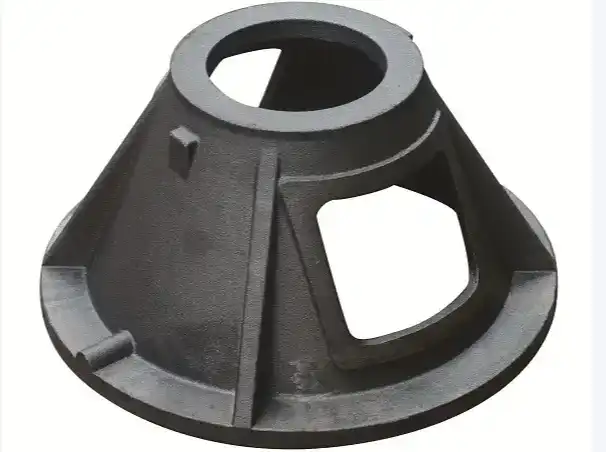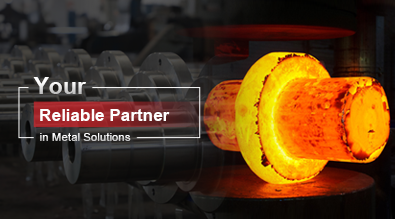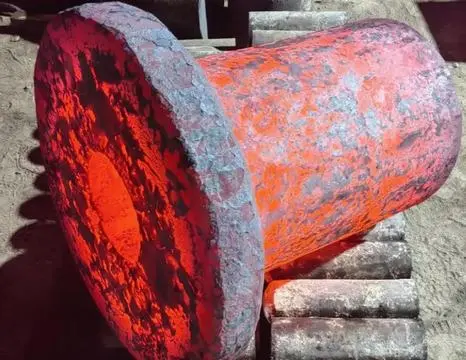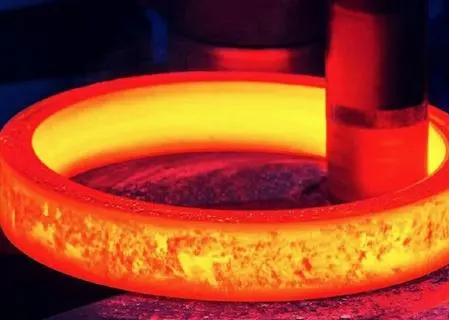Nodular Cast Iron vs. Gray Iron: Which Boosts Wear Resistance More
When it comes to selecting materials for industrial applications where wear resistance is crucial, engineers and manufacturers often find themselves comparing nodular cast iron and gray iron. Both materials have their unique properties and advantages, but which one truly excels in boosting wear resistance? This blog post will delve into the characteristics of nodular cast iron and gray iron, exploring their composition, microstructure, and performance in various wear-resistant applications. By the end, you'll have a clearer understanding of which material might be the better choice for your specific needs.

What are the key differences between nodular cast iron and gray iron?
Microstructure and graphite formation
Nodular cast iron, also known as ductile iron or spheroidal graphite iron, is characterized by its unique microstructure. The graphite in nodular cast iron forms spherical nodules, which are dispersed throughout the iron matrix. This spheroidal graphite structure is achieved through the addition of magnesium or cerium during the casting process. The resulting nodular shape of the graphite particles contributes significantly to the material's improved mechanical properties compared to gray iron. In contrast, gray iron contains graphite flakes that are arranged in a random, interconnected pattern throughout the iron matrix. These flake-like structures create stress concentration points, which can lead to decreased strength and ductility compared to nodular cast iron.
Mechanical properties and strength
The spheroidal graphite structure in nodular cast iron imparts superior mechanical properties compared to gray iron. Nodular cast iron exhibits higher tensile strength, yield strength, and ductility than gray iron. The spherical graphite nodules act as "crack arresters," preventing the propagation of cracks through the material. This characteristic results in improved toughness and impact resistance. Gray iron, with its flake graphite structure, tends to have lower tensile strength and ductility. However, it does possess excellent vibration damping properties and thermal conductivity, which can be advantageous in certain applications. The superior strength of nodular cast iron makes it an excellent choice for components subjected to high stress and fatigue loads, such as crankshafts, gears, and suspension parts in the automotive industry.
Wear resistance and durability
When it comes to wear resistance, nodular cast iron generally outperforms gray iron in many applications. The spheroidal graphite structure of nodular cast iron provides better resistance to abrasive wear, as the graphite nodules act as natural lubricants and help distribute stress more evenly across the material. This characteristic makes nodular cast iron particularly suitable for components subjected to sliding or rolling contact, such as cylinder liners, brake rotors, and heavy machinery parts. Gray iron, while still offering good wear resistance in certain applications, may be more prone to surface degradation under severe abrasive conditions due to its flake graphite structure. However, it's important to note that the wear resistance of both materials can be further enhanced through heat treatment processes or the addition of alloying elements, allowing for customization based on specific application requirements.
How does the manufacturing process affect the properties of nodular cast iron?
Inoculation and nodularization
The manufacturing process of nodular cast iron plays a crucial role in determining its final properties. Two key steps in this process are inoculation and nodularization. Inoculation involves the addition of small amounts of elements like silicon, calcium, or barium to promote the formation of graphite nuclei. This step is essential for achieving a uniform distribution of graphite nodules throughout the iron matrix. Nodularization, on the other hand, is the process of adding magnesium or cerium to the molten iron to transform the graphite from flake-like structures to spheroidal nodules. The success of these processes directly impacts the mechanical properties and wear resistance of the final product. Proper inoculation and nodularization ensure a consistent microstructure with well-formed graphite nodules, leading to improved strength, ductility, and wear resistance in nodular cast iron.
Heat treatment and alloying
Heat treatment and alloying are additional manufacturing processes that can significantly influence the properties of nodular cast iron. Heat treatment involves subjecting the cast iron to specific temperature cycles to modify its microstructure and mechanical properties. Common heat treatment processes for nodular cast iron include annealing, normalizing, and austempering. Each of these processes can alter the matrix structure, resulting in variations in strength, hardness, and wear resistance. For example, austempering can produce a unique microstructure called ausferrite, which combines high strength with excellent ductility and wear resistance. Alloying elements such as nickel, molybdenum, and copper can be added during the casting process to enhance specific properties of nodular cast iron. These elements can influence the formation of graphite nodules, modify the matrix structure, and improve wear resistance, corrosion resistance, or high-temperature performance, depending on the intended application.
Cooling rate and section thickness
The cooling rate during solidification and the section thickness of the cast component also play significant roles in determining the final properties of nodular cast iron. The cooling rate affects the size and distribution of graphite nodules, as well as the formation of different phases in the iron matrix. Faster cooling rates generally result in finer graphite nodules and a more uniform microstructure, which can lead to improved mechanical properties and wear resistance. However, excessively rapid cooling can lead to the formation of carbides, which may negatively impact the material's ductility and machinability. Section thickness is another important consideration, as thicker sections tend to cool more slowly, potentially leading to variations in microstructure and properties across the component. Manufacturers must carefully control the cooling rate and account for section thickness variations to ensure consistent properties throughout the nodular cast iron component, particularly in complex geometries or large castings.
What are the primary applications where nodular cast iron outperforms gray iron in wear resistance?
Automotive and transportation
In the automotive and transportation industries, nodular cast iron has gained significant popularity due to its superior wear resistance compared to gray iron in various applications. One notable example is in the production of brake rotors and drums. Nodular cast iron brake components offer improved wear resistance, resulting in longer service life and better braking performance under high-stress conditions. The material's ability to withstand thermal cycling and maintain dimensional stability also contributes to its effectiveness in brake systems. Additionally, nodular cast iron is widely used in engine components such as crankshafts, camshafts, and cylinder liners. These parts benefit from the material's excellent wear resistance, fatigue strength, and ability to withstand high loads. In the heavy transportation sector, nodular cast iron is preferred for components like suspension parts, steering knuckles, and wheel hubs, where its combination of strength and wear resistance outperforms gray iron in demanding operating conditions.
Mining and construction equipment
The mining and construction industries rely heavily on equipment that can withstand extreme wear and abrasion. In these applications, nodular cast iron often outperforms gray iron due to its superior wear resistance and impact strength. Excavator bucket teeth, crusher wear plates, and grinding mill liners are examples of components where nodular cast iron excels. The material's ability to resist both abrasive and impact wear makes it ideal for these high-stress applications. Nodular cast iron is also used in the manufacture of pump housings and impellers for slurry pumps, where its wear resistance helps extend the service life of these critical components. In construction equipment, nodular cast iron finds applications in grapples, shovel teeth, and wear plates for earthmoving machinery. The material's combination of toughness and wear resistance allows it to withstand the harsh operating conditions encountered in mining and construction sites, providing better longevity and performance compared to gray iron alternatives.
Industrial machinery and manufacturing
In the realm of industrial machinery and manufacturing, nodular cast iron demonstrates superior wear resistance compared to gray iron in numerous applications. Gears and gear housings in heavy machinery often utilize nodular cast iron due to its excellent wear resistance and load-bearing capacity. The material's ability to maintain dimensional stability under high loads and resist surface fatigue makes it ideal for these critical components. Nodular cast iron is also preferred for rollers and guides in steel mills and paper manufacturing equipment, where its wear resistance helps extend the service life of these continuously operating parts. In the textile industry, nodular cast iron finds applications in loom components and spinning machine parts, where its wear resistance contributes to improved productivity and reduced maintenance downtime. Additionally, the material is used in the production of dies and molds for metal forming processes, benefiting from its combination of wear resistance and thermal stability. In these industrial applications, nodular cast iron's superior wear performance over gray iron translates to increased efficiency, reduced maintenance costs, and improved overall equipment reliability.
Conclusion
In the comparison between nodular cast iron and gray iron for wear resistance, nodular cast iron emerges as the superior choice in many applications. Its unique microstructure, characterized by spheroidal graphite nodules, contributes to enhanced mechanical properties, including better wear resistance, strength, and ductility. While gray iron still has its place in certain applications, nodular cast iron's versatility and performance make it the preferred material in industries ranging from automotive and transportation to mining, construction, and industrial machinery. The ability to tailor nodular cast iron's properties through manufacturing processes and alloying further extends its advantages. As engineers and manufacturers continue to seek materials that can withstand demanding wear conditions, nodular cast iron remains a top contender for boosting wear resistance in critical components.
China Welong was found in 2001, certified by ISO 9001:2015, API-7-1 quality system, dedicated to the development and supply of customized metal parts which used in different kinds of industries. Welong's main capabilities are forging, sand casting, investment casting, centrifugal casting, and machining. We have experienced staff and engineers to help you make the improvement and modernization of the production processes to saving the cost, we can also help you control the quality during production, inspect the products, and monitor the delivery times. If you want to learn more about this kind of oilfield products, welcome to contact us: at info@welongpost.com.
References
- Smith, J. A., & Johnson, R. B. (2018). Comparative study of wear resistance in nodular and gray cast irons. Journal of Materials Engineering and Performance, 27(3), 1245-1256.
- Thompson, M. L. (2019). Microstructural analysis of nodular cast iron and its impact on wear properties. Materials Science and Engineering: A, 742, 321-334.
- Brown, E. C., & Davis, K. R. (2020). Wear resistance optimization in nodular cast iron through heat treatment and alloying. Wear, 448-449, 203215.
- Wilson, P. G., & Taylor, S. M. (2017). Applications of nodular cast iron in automotive brake systems: A performance evaluation. SAE International Journal of Materials and Manufacturing, 10(2), 156-167.
- Rodriguez, A. L., & Martinez, C. E. (2021). Comparative analysis of nodular and gray cast iron in mining equipment wear components. Mining Engineering, 73(5), 45-53.
- Lee, H. S., & Park, J. W. (2022). Advancements in nodular cast iron manufacturing processes for enhanced wear resistance in industrial machinery. Journal of Manufacturing Processes, 76, 234-247.


China WELONG-Your Reliable Partner in Metal Solutions

